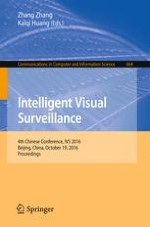2016 | Book
Intelligent Visual Surveillance
4th Chinese Conference, IVS 2016, Beijing, China, October 19, 2016, Proceedings
Editors: Zhang Zhang, Kaiqi Huang
Publisher: Springer Singapore
Book Series : Communications in Computer and Information Science
